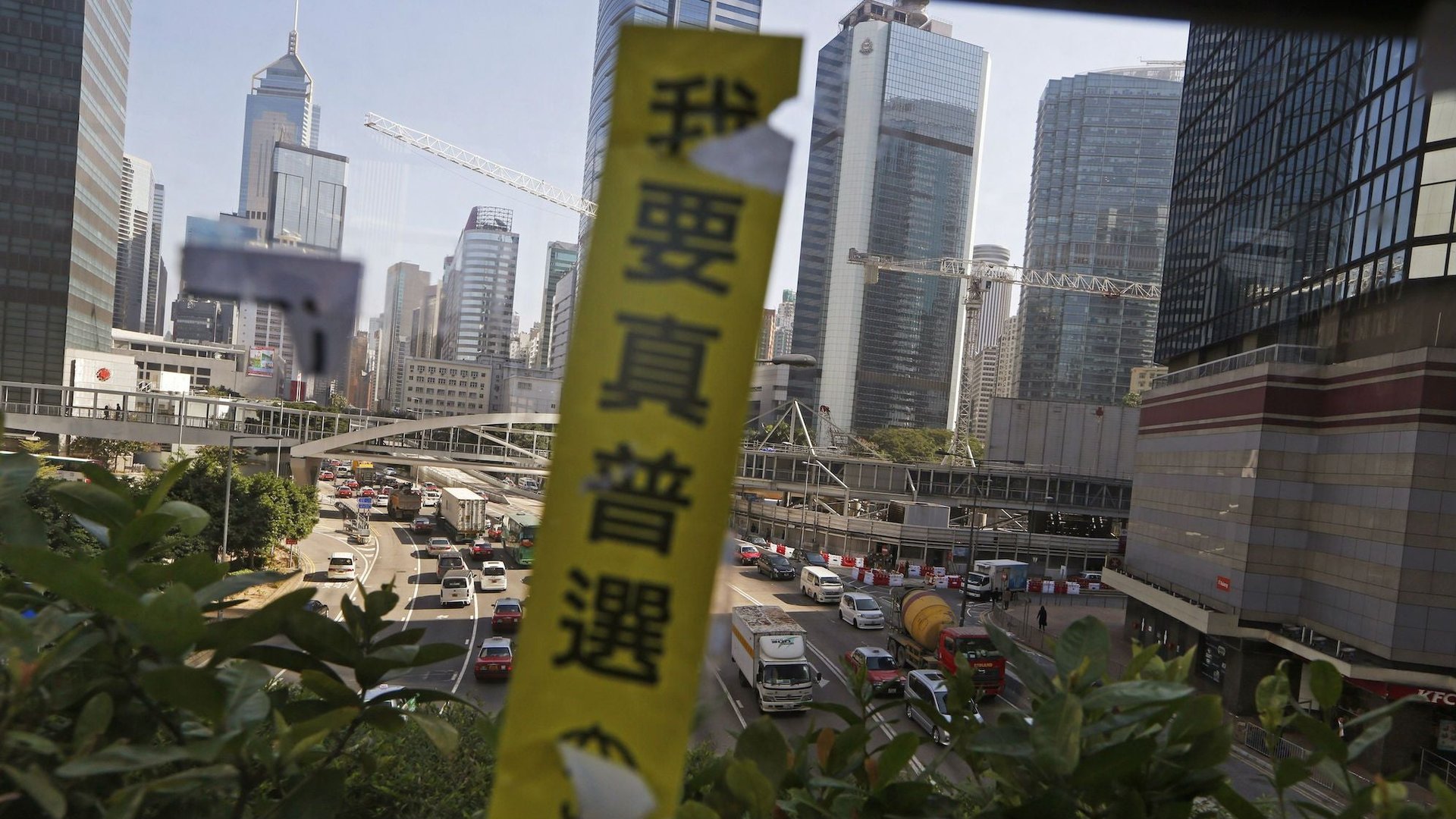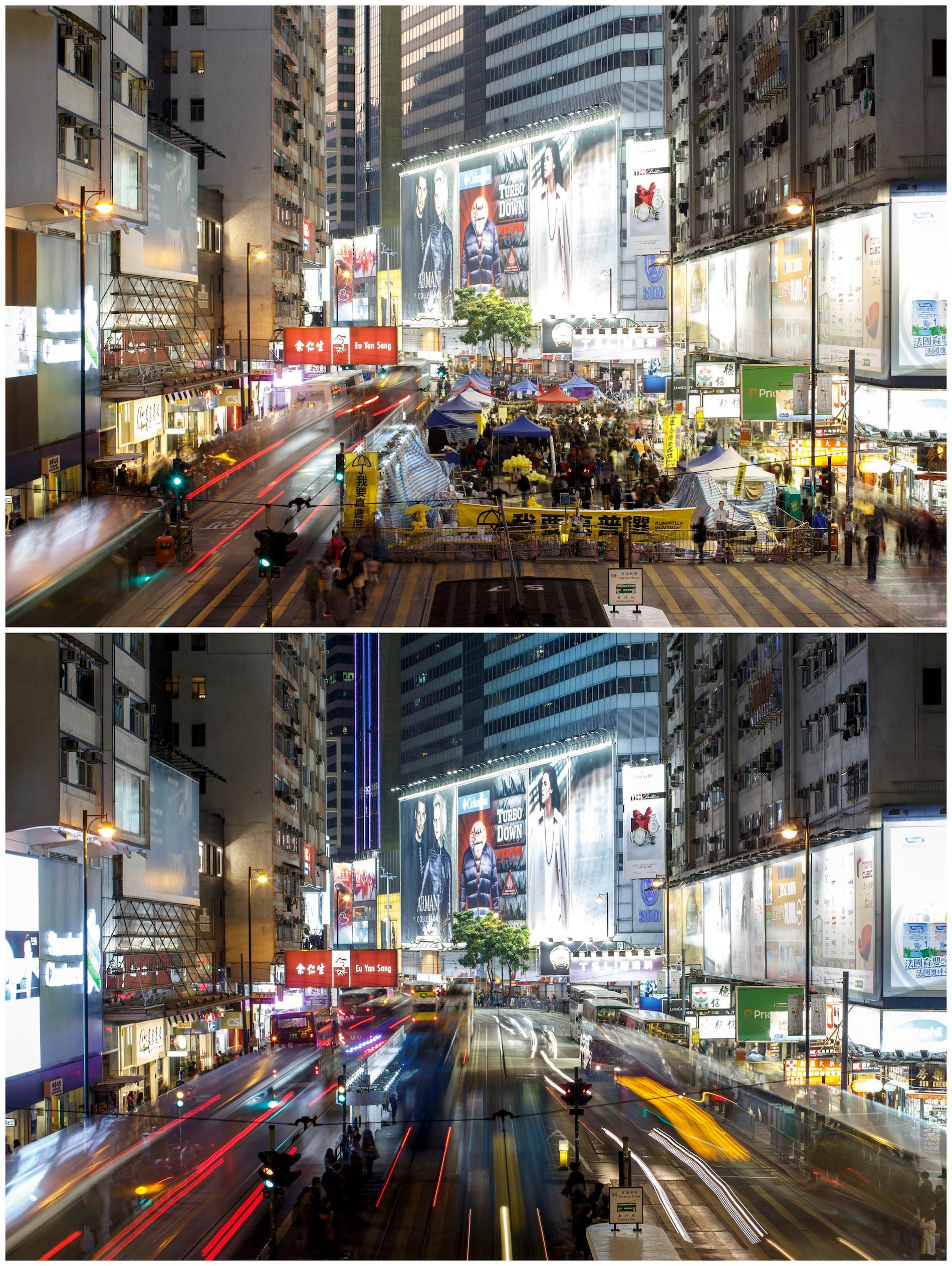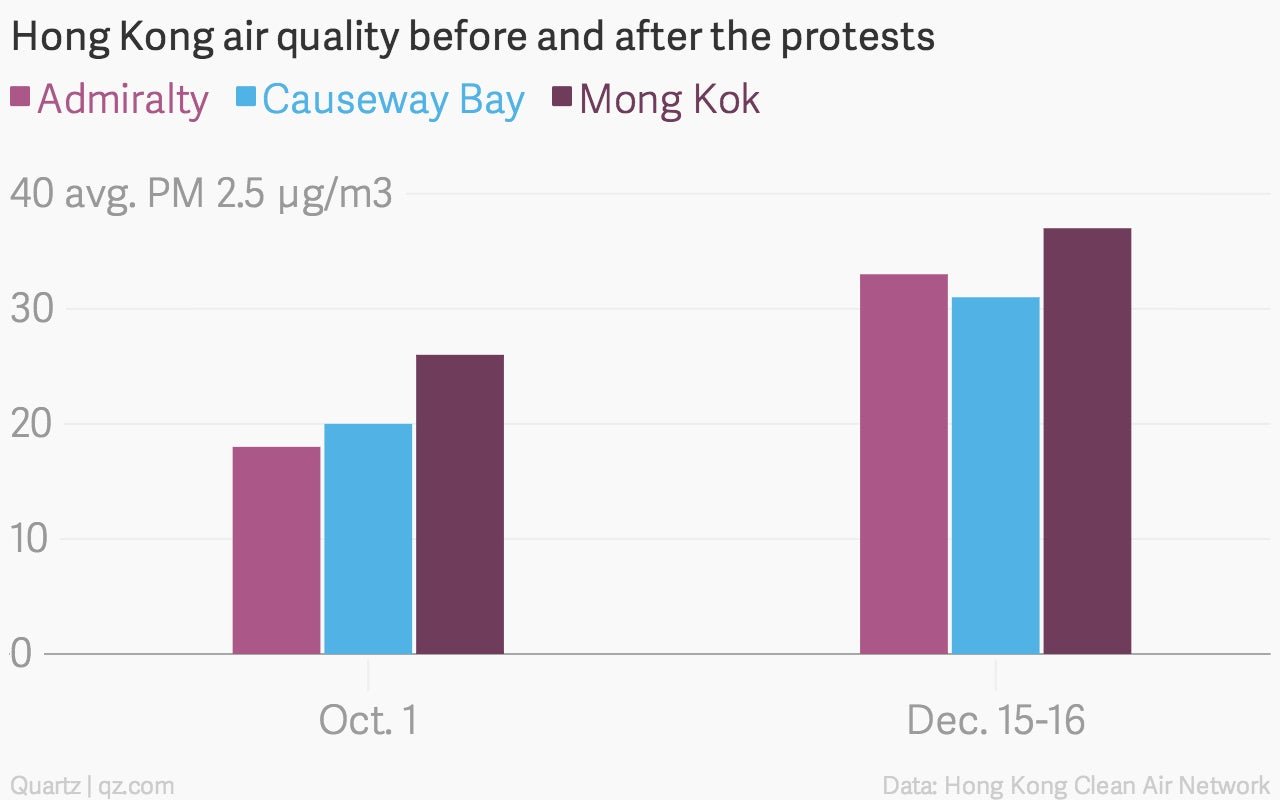Now that Hong Kong’s democracy protesters are gone, air pollution is rising
Hong Kong’s pro-democracy activists may have inadvertently recruited a big group of sympathizers—pedestrians who got used to cleaner air in the city center during the 75-day long protest that barred cars from three major roads in the city. Kwong Sum Yin, head of the Hong Kong-based NGO Clean Air Network, said that just because the main protest areas have been cleared, ”we need not ‘return to normal’ with congested roads and filthy air.”


Hong Kong’s pro-democracy activists may have inadvertently recruited a big group of sympathizers—pedestrians who got used to cleaner air in the city center during the 75-day long protest that barred cars from three major roads in the city. Kwong Sum Yin, head of the Hong Kong-based NGO Clean Air Network, said that just because the main protest areas have been cleared, ”we need not ‘return to normal’ with congested roads and filthy air.”

But the city is already returning to normal, which includes bad air and snarled traffic. Kwong’s group compared the amount of particulate matter in the air—particles small enough to enter one’s bloodstream and cause the most harm—on Oct. 1, during the first week of the protests, and again on Dec. 15 and 16, after the protesters were cleared out. All three protest sites have increased their readings of harmful particulate levels by over 40%:

Hong Kong has some of the world’s worst air pollution from car exhaust, thanks to the 325 vehicles per kilomter of road in the territory—the densest in the world according to World Bank data. Narrow roads flanked by tall concrete buildings amplify the effect by trapping pollutants in the air in populated areas. And a bridge under construction that will connect Hong Kong with economic hubs in the mainland Pearl River Delta—the Hong Kong-Zhuhai-Macau Bridge—is expected to bring thousands of more cars into the city.